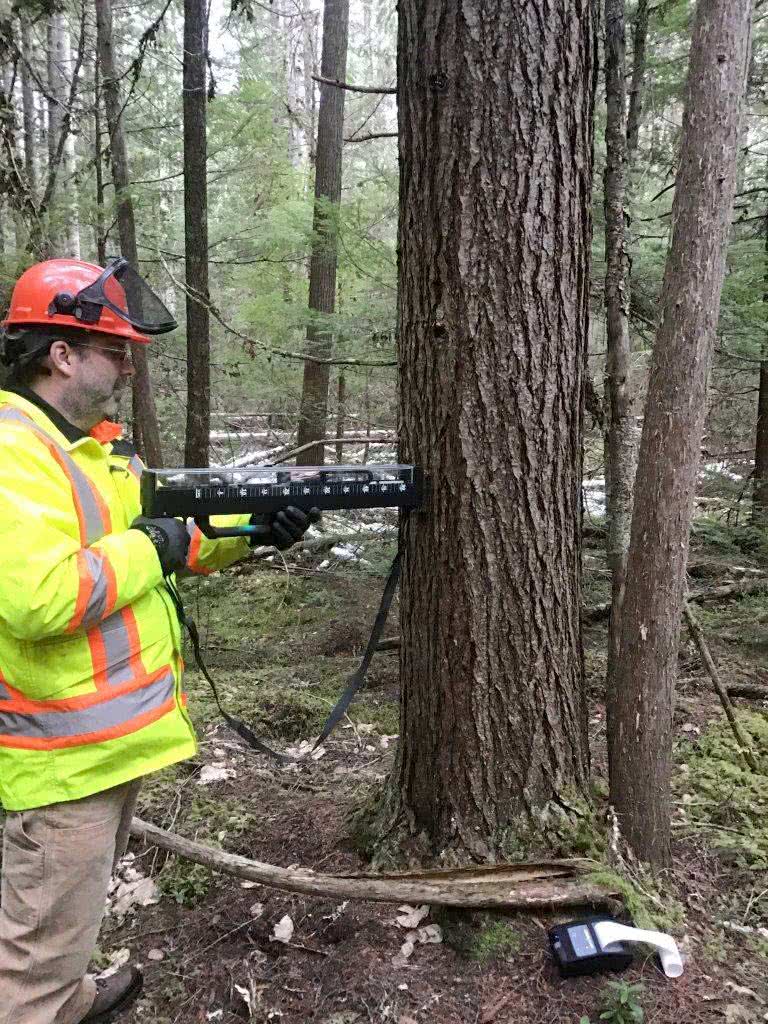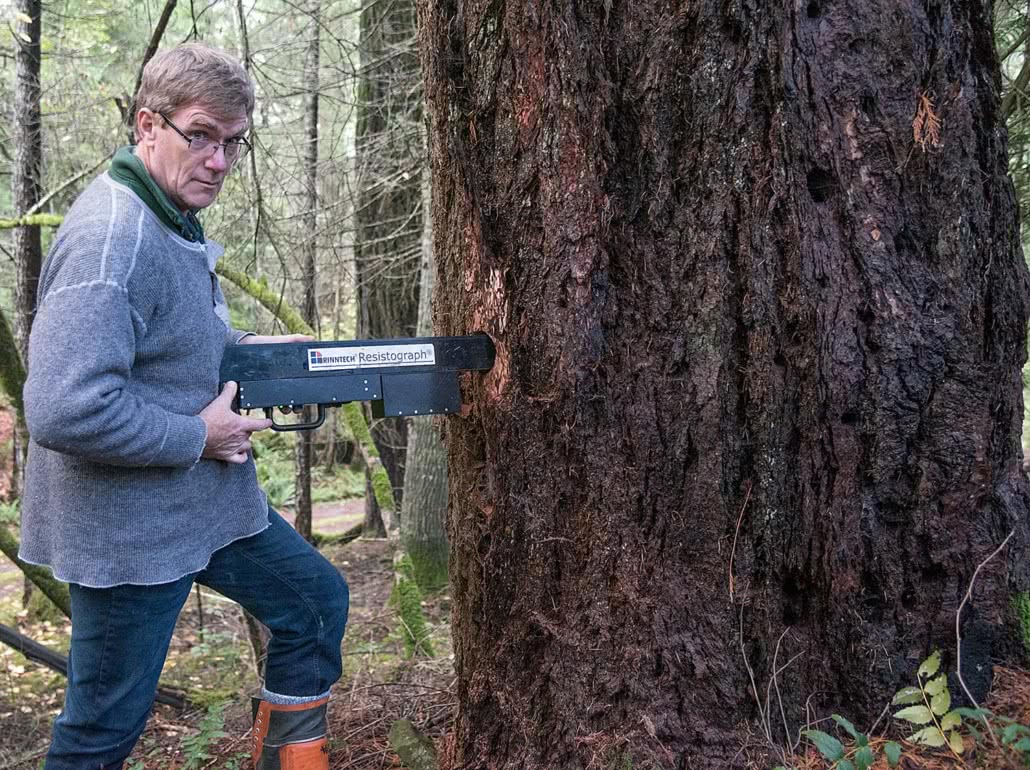Resistograph®
The resistance drill for detecting decay in wood
Timber Cruising
Foresters often need to know the amounts of decay present in standing timber. That can be determined by the standard fell, buck, and scale approach. Cut a tree down, dissect it, and then measure the extent of decay and loss of merchantable volume. It is a time consuming process. By using a Resistograph® the sample tree is drilled at the compass coordinates (North to south, east to west, south to north, west to east) and the resultant data recorded and reviewed on site. Because many of the important volume loss decays occur in the butt log of the tree, testing with the Resistograph® is a cost effective way to check for decay.
In some instances, foresters need to know the width of the annual rings or the estimated age of a tree. Is it an old growth tree? If there is a threshold age for that definition, use of the Resistograph® can be a very useful way to investigate the age of the tree. Because the Resistograph® has the capability of sampling at such fine resolutions it is possible to accurately detect and measure the density variations in any one annual ring between early and late wood cells. Annual ring width and wood density data is an important factor for scientists looking at climate data and the Resistograph® provides the data needed for scientifically defensible research.
Testing standing timber for decay. Image courtesy of Tolko Forest Industries.
Testing old growth Douglas-fir on Vancouver Island with an R 550 prototype to determine age of tree.


